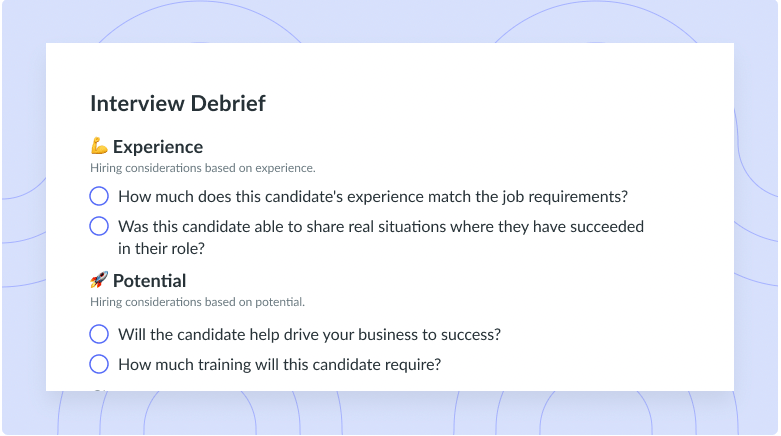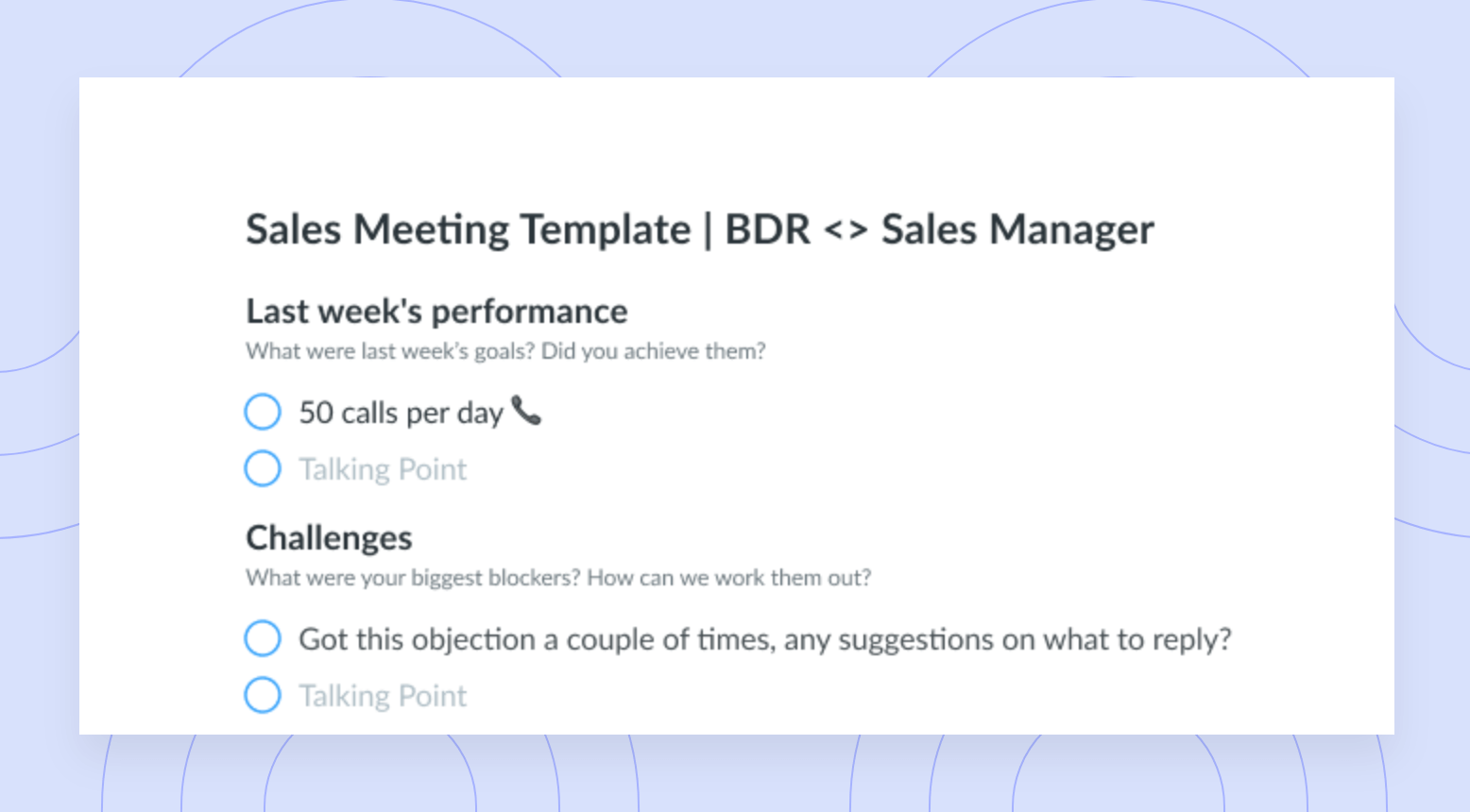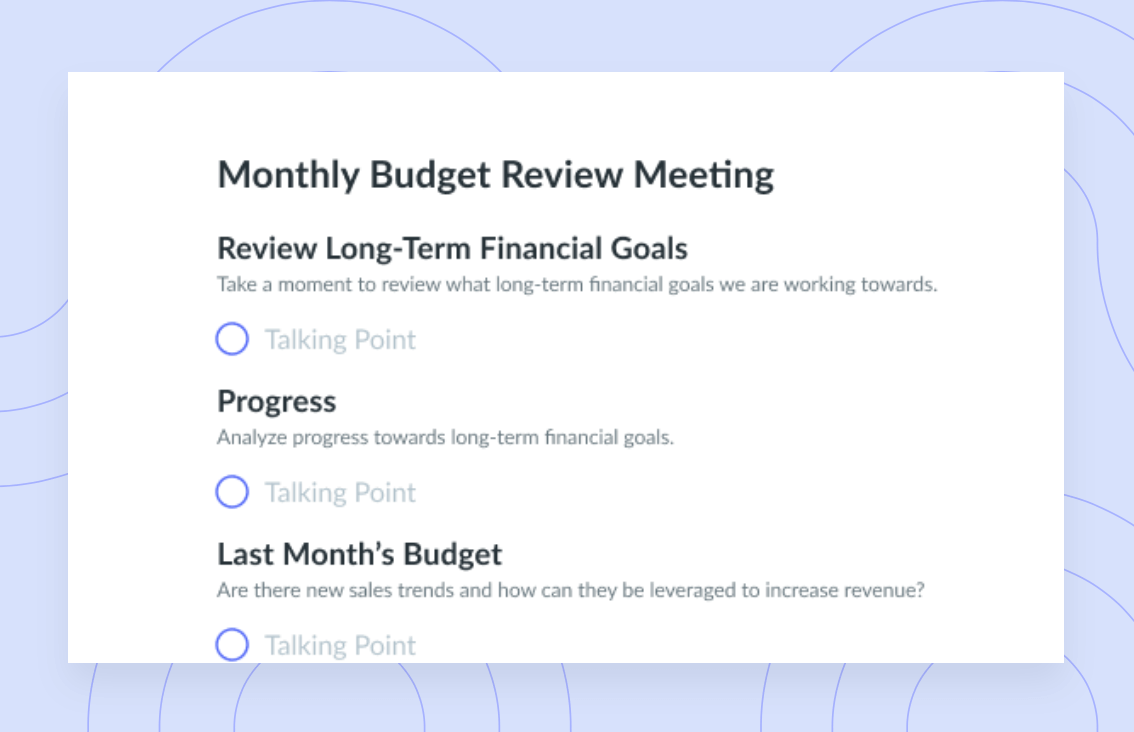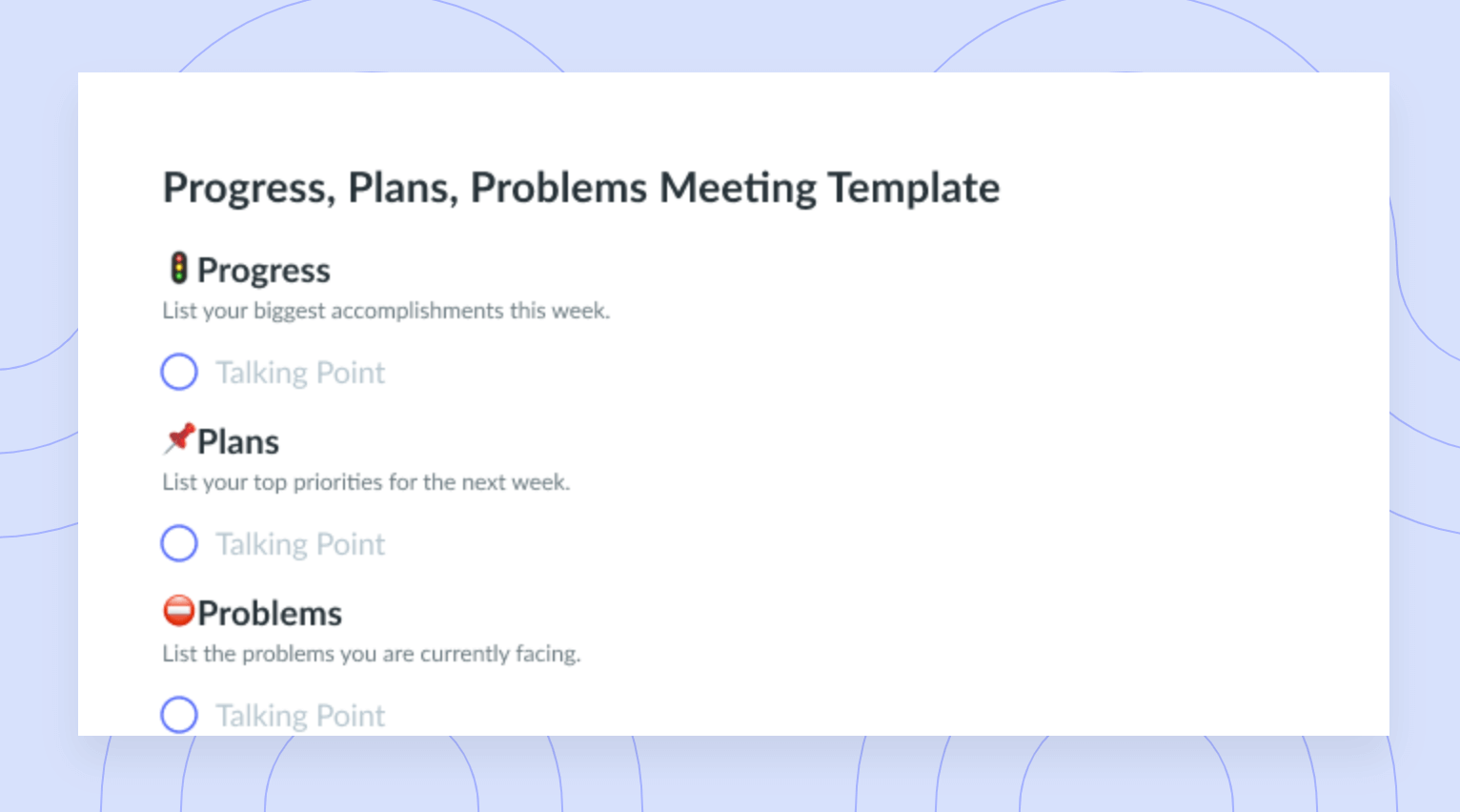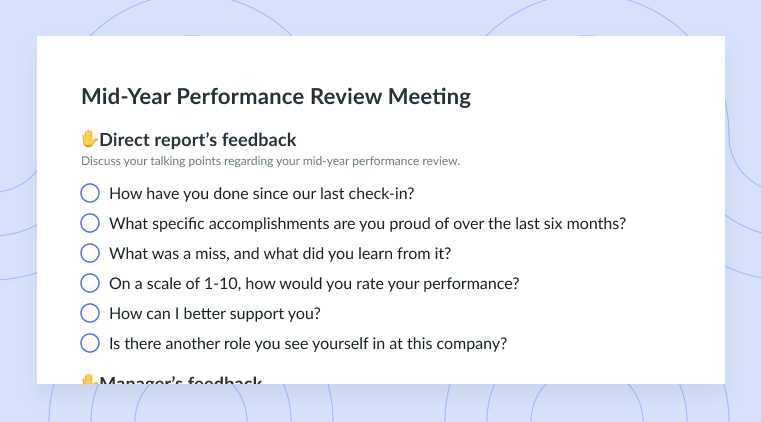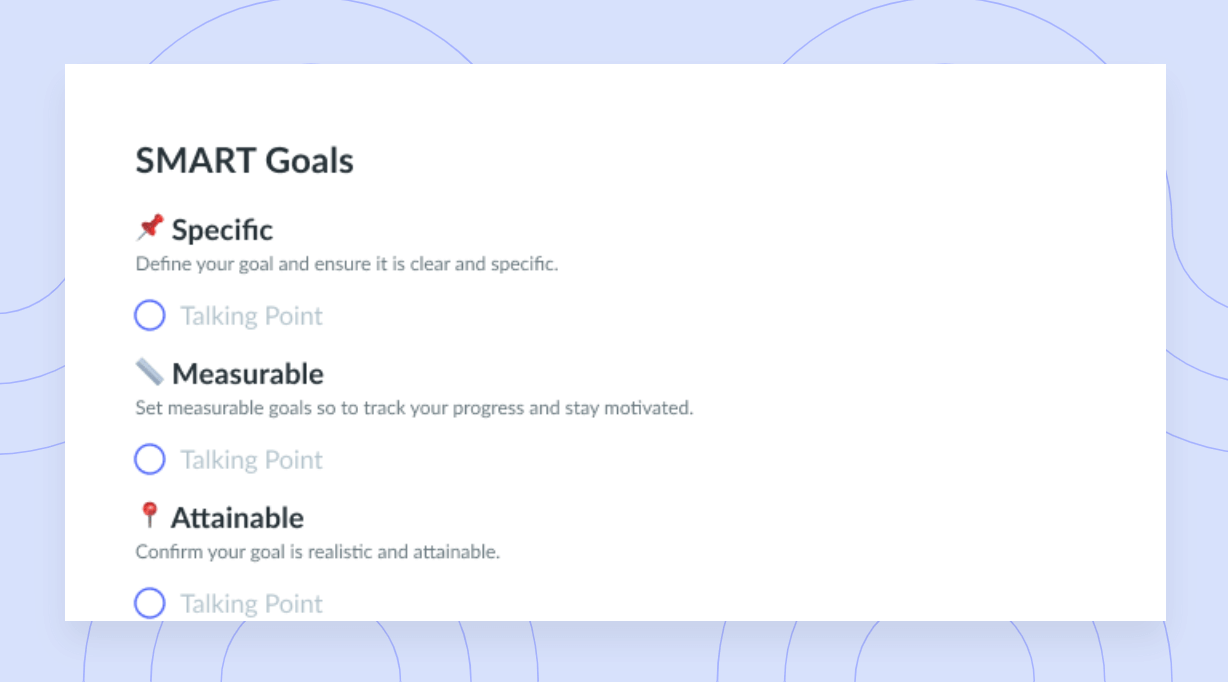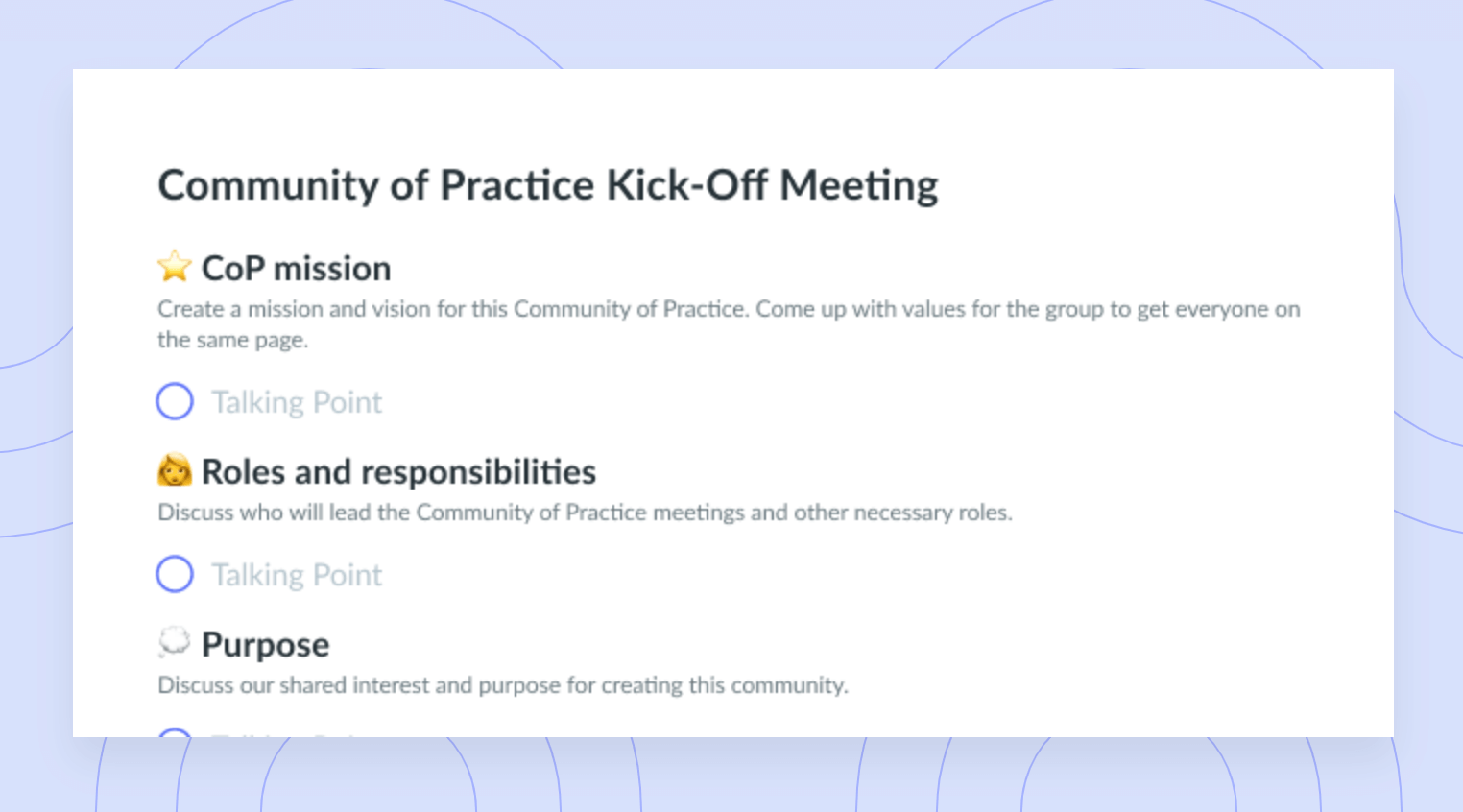Mindful Meetings: A Complete Guide For More Delightful Meetings
It’s important to incorporate some mindfulness into meetings so you and your team can stay present, focused, and productive.
Mindfulness is a practice that belongs in many workplaces now that we know that it can reduce stress, help us stay present, and result in increased productivity. Many of us attend too many mindless meetings, where the intention of the meeting isn’t clear and the meeting lacks focus. To have a productive meeting, you’ll need to remain in the present moment, staying as aware and attentive as possible. This article is going to go through how to facilitate mindful meetings that focus on ensuring intentionality and delivering organizational results.
What is a mindful meeting?
A mindful meeting is a discussion where the facilitator or meeting leader supports the group by being aware of the present moment and digesting information before reacting to it. This added thoughtfulness and introspection allows individuals to respond with more intent, more creativity, and more insight. We often have a million things on our minds, so directing the focus on one thing at a time, with true intent, is going to allow the meeting to be more productive and composed. Participants may be asked to write down their thoughts or responses to the discussion first and share them as reflections, rather than immediate reactions, later in the meeting.

Mindful and delightful
Make the best use of your time by collaborating with your team on meeting agendas using a tool like Fellow!

13 tips for a mindful meeting
- Do a self-check-in before the meeting
- Show up on time
- Start with a minute of meditation
- Check in with the group
- Set intentions for the meeting
- Mute all devices
- Share the agenda beforehand
- Avoid adding spontaneous topics
- End the meeting with feedback
- Summarize the positive points
- Take meeting notes
- Make sure only one person speaks at a time
- Remember: no agenda, no attendance
1 Do a self-check-in before the meeting
Before the meeting, ask yourself how you’re feeling and try coming up with a few words that can describe your mood. The state in which you actually show up to a meeting has a huge effect on the overall impactfulness of the meeting. Taking a moment before or at the beginning of the meeting to check in with yourself ensures that you’re approaching the discussion with the right mindset.
2 Show up on time
Always show up on time. This is a sign of respect for everyone attending, since they’ve taken the time out of their busy day to be present and to direct their attention towards the meeting. When you don’t show up on time, you’re essentially telling the rest of the attendees that the meeting isn’t your priority and therefore is unimportant. Not only is it distracting to come in late, but your late entrance is also going to negatively impact team morale.
3 Start with a minute of meditation
Starting your meeting with a minute of meditation or by setting some individual or team intentions focuses the group and creates a calm, productive environment. It’s especially important to slow down when you’re working on several simultaneous projects or have many tasks on the go. When you close your eyes and take some deep breaths, you allow your body to relax, and this moment of peacefulness can reduce stress. Intention setting is also a great way to ensure you stay on topic and don’t pivot from the purpose of the meeting.
4 Check in with the group
Just as important as checking in with yourself is checking in with your teammates. It’s a great idea to take a few minutes at the beginning of each meeting to go around the room (whether virtually or in person) and have each person say how they’re feeling today or how present they feel. You can offer a scale from 1-10 to help participants rank how they’re doing. This gives everyone a chance to reflect on how they’re doing, and also allows a few minutes for people to bring their attention to the present moment.
5 Set intentions for the meeting
After checking in with yourself and with your team, you (as the meeting leader or facilitator) should make clear what the intentions are for the meeting. More specific than discussion topics, the intentions for the meeting should encompass the goals of the meeting, which don’t always need to be organizational. In some meetings, the interpersonal goals (like facilitating a space for team members to catch up and share how they’re doing this week, say what their challenges may be, and collaborate) can be more important than achieving specific metrics. All too often, teams meet without being mindful of what they are doing in the meeting together. Avoid this confusion by setting your meeting intentions and being clear on them from the get-go.
6 Mute all devices
If you want to succeed at having a mindful meeting, it’s essential that all of your devices are muted and put away so you can focus on the present moment and avoid distractions. When people have notifications popping up every few minutes (especially with social media going off), these notifications take away from the focus of the meeting, leading everyone out of the present moment. Don’t be afraid to enforce a no-device rule for meetings and make the meeting expectations clear before participants even enter the meeting room.
7 Share the agenda beforehand
Always share your meeting agenda ahead of time. Not only does this adequately prepare everyone to actively participate in the conversation, but it also allows some time for your team members to share suggestions, ideas, or any other topics that they feel may be important to cover. The meeting facilitator should work to create the structure of the meeting so participants can come up with valuable content to discuss under each agenda item.
If no attendees have contributions to the meeting agenda, Fellow’s Time Saver automation will remove potentially unproductive meetings that have no agenda from your calendar and give you the option to cancel the meeting so you get that time back.
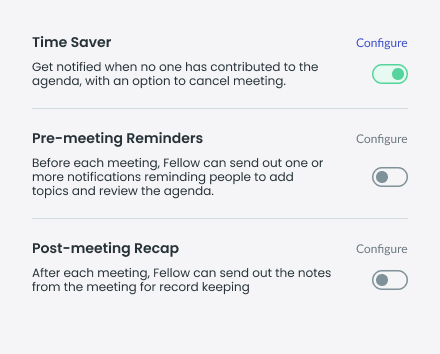
8 Avoid introducing spontaneous topics to the agenda
Once you’ve created your meeting agenda, stick to it. If one person adds a spontaneous topic, others might feel that they can also bring up any other topics of discussion that are on their mind. Any topics that come up that are outside the scope of the meeting agenda items go in the parking lot, where these separate discussions can be had another time, outside of the meeting. Whether these discussions are had via email, over an informal coffee, or during a separate meeting with specific people is completely up to you, so long as you recognize that these off-topic discussions don’t belong in a mindful meeting.
9 End the meeting with feedback
Ending the meeting with feedback is a great opportunity to give participants the chance to share some honest feedback on anything that may be important to them, whether it’s about a project they’ve been working on or about the actual meeting that just took place. Allowing feedback creates a supportive space for collaboration where everyone has the opportunity to be heard, and ensures employees that their thoughts and opinions are important to the entire team.
10 Summarize the positive points
A great way to maintain focus and keep your team members engaged is to make sure that you’re finishing the meeting on a positive note. This is going to leave you and your colleagues feeling energized and motivated even after the meeting has come to a close. You can choose to collaborate on summarizing the positive developments within the team right now so everyone is involved. Ending each meeting on a positive note is really important to bring your team closer together and to build morale. You can mix and tailor approaches to personalize them for your team, or you can ask your team members which approach they prefer.
11 Take meeting notes
Taking notes is an absolute must for mindful meetings. Any decisions that are made, action items that are assigned, and follow-ups and parking lot items that are discussed should be included in the notes that are taken. Because a lot of information is shared during meetings, be sure to assign a note taker so no detail is missed. These notes are going to keep everyone in the know and on the right track so the team can continue working towards achieving its goals.
12 Make sure only one person speaks at a time
Actively and mindfully listening is an important skill to master and acts as a great learning opportunity for participants. This reflection rather than reaction is going to generate more thoughtful contributions to the conversation, once it’s one particular person’s time to speak. Ensure that when someone is speaking, they have the floor and everyone’s undivided attention. Only this person can talk at this time, and everyone else should be mindfully listening.
13 Remember: no agenda, no attendance
If there isn’t a meeting agenda, the chances are your meeting will end up being mindless. Don’t be afraid to cancel unnecessary meetings when there hasn’t been an agenda put forward. A simple no agenda, no attenda rule will ensure you and your team are organized to meet each time. This rule highlights the importance of the agenda in helping your team be productive and providing a structure that suits and supports the team’s needs.
Parting advice
Creating a space where you and your team can have a mindful meeting is going to foster a collaborative, supportive, and productive environment where you can continue working towards your goals in a more effective and thoughtful manner. While it takes time and consistency to build meeting habits, start by incorporating some of these tips little by little until they’re embedded in your mindful meeting culture. If you found this article to be helpful, be sure to send it to a friend or a colleague. Until next time!



![How to Run CAB Meetings [+ FREE Agenda Template]](https://fellow.app/wp-content/uploads/2022/06/CAB-Meeting-Agenda-2.jpg)





